The great Chinese mitten crab invasion: Map shows how clawed incomers have spread across UK as experts warn they are endangering British riverbanks – and can give a painful nip if threatened
>
The spread of Chinese mitten crabs across the UK over the years has been revealed on a map, with experts warning they are endangering Britain’s river banks and can cause pain if threatened.
The crustacean, which first appeared in the UK in 1935, has been seen roaming around London and Cambridgeshire, including at a dam in Whittlesea and a country park in Peterborough.
The Chinese mitten crab is thought to have settled in the River Thames in 1973 and has spread further afield since then, including the Tyne, Humber, Medway, Wharfe, Ouse, Tamar and Dee rivers.
Since 2016, the species – named after its furry tentacles – has been classified as “widespread” across the UK.
According to the National History Museum’s ‘Mitten Crab Watch’, more than 800 records have been submitted so far – confirming that the creature is spreading across the UK.
Their interactive map shows that crab sightings have been confirmed across Britain, including London, Newcastle, Manchester, Swansea, Glasgow and Brighton.
With recent sightings of Chinese mitten crabs across Britain, Luana Factor, an exotic animal care vet at Hermit Crab Answers, told MailOnline: ‘Due to their adaptability, migratory behaviour, and previous spread in the UK and other parts of the world, There is certainly potential for further spread across the UK.
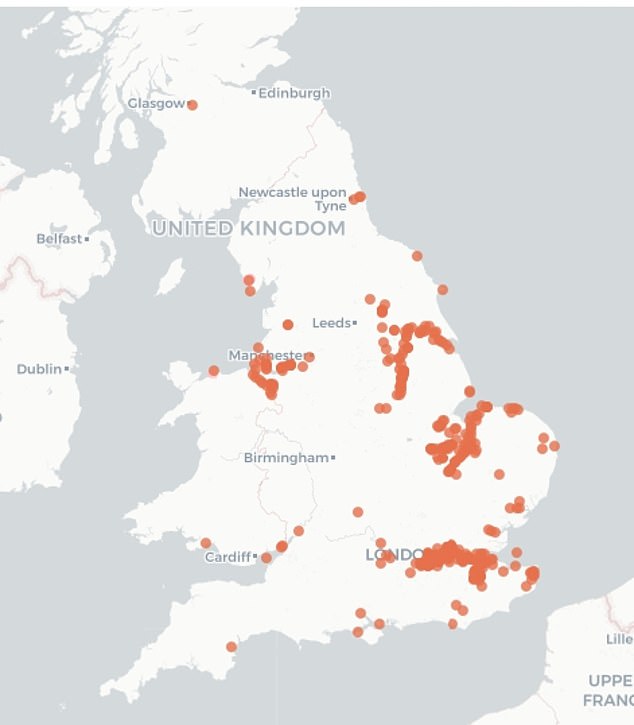
The spread of Chinese mitten crabs across the UK over the years is revealed in the map

Luana Factor (pictured), an exotic animal vet at Hermit Crab Answers, told MailOnline that there was ‘definitely the potential for more to spread across the UK’.
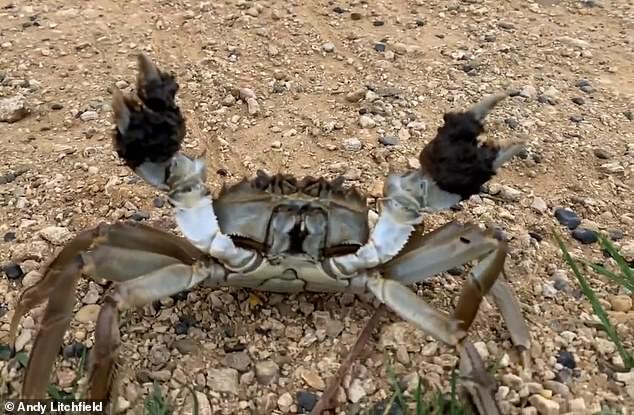
Pictured: A Chinese mitten crab that Andy Litchfield came across in Bushy Park, south-west London, while walking his dog
Ms Factor said Chinese mitten crabs could cause environmental disturbances, including damaging river banks by burrowing, competing with native species for resources, blocking water outlets and damaging fishing gear.
This comes after invasive species were spotted on roads and ponds in Cambridgeshire.
The footage was captured by Richard Bailey at Kings Dyke in Whittlesey, while there were other scenes at Nene Park in Peterborough.
In a warning to Britons, the Nene Park Trust said: “They (the crabs) pose no threat to people or dogs, but they may bite if anything gets too close, so we advise visitors to keep their distance.”
The Nene Park Trust said it was aware of sightings of the crabs around Orton Water in Peterborough. A spokesperson for the organization said there was little action the organization could take, as “(the cancers) spread naturally through the UK’s waterways.”
It comes at a time when Britons are already increasingly concerned about a bedbug invasion from France.
The Natural History Museum said the invasive crabs can grow to the size of dinner plates.
Elsewhere, Andy Litchfield said he was walking his dog in Bushy Park, southwest London, when he saw a crab last Friday.
He told the Woking News and Mail he had seen crabs before but “never on land”.
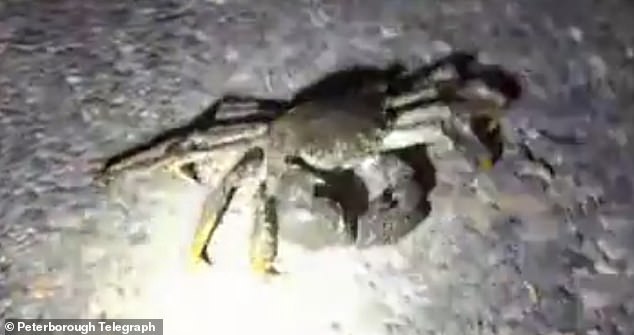
The crabs erode river banks by burrowing and also affect the fishing industry by feeding on fish stocks and damaging nets. Pictured: Chinese mitten crab at Peterborough Kayaking Lake

The crustaceans have been seen in waterways in Cambridgeshire, including the dam at Whittlesea (pictured)
He added: “I was walking my Labrador in Bushy Park on Friday morning when he stopped to smell something on the ground, and I was surprised to see that it was a crab.”
He captured video of the encounter, which saw the crab get defensive and stick its claws into the air.
The Chinese mitten crab is among 30 non-native species listed as a concern due to its “invasiveness and ability to establish itself in many countries across Europe.”
According to the National History Museum’s ‘Mitten Crab Watch’, more than 800 records have been submitted so far – confirming that the creature is spreading across the UK.
Their interactive map shows that crab sightings have been confirmed across Britain, including London, Newcastle, Manchester, Swansea, Glasgow and Brighton.
Since 2020, the crab has been found in the River Severn and Morecambe Bay area.
“They live and thrive until their shells extend about three inches,” Ms Factor said, adding: “Those furry-looking protrusions, almost glove-like, adorn their front claws, distinguishing them from their crustacean relatives.”
She added, “Their stay in fresh water is not eternal.” She told MailOnline: ‘As autumn arrives, these crabs embark on a massive journey back to saltwater expanses, overcoming the challenges posed by even human-designed dams.’
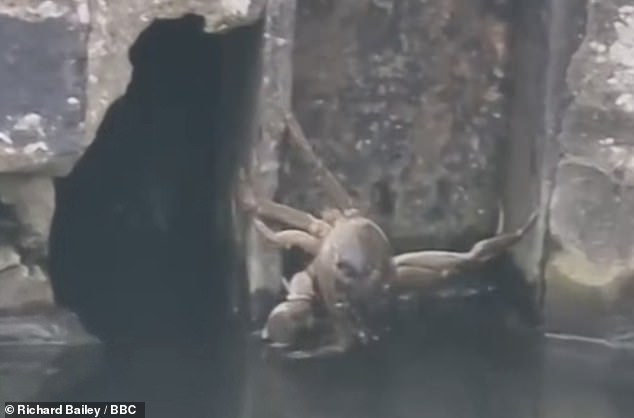
The species – named after its furry tentacles – is believed to have moved from eastern China to Europe and North America in sediments found at the bottom of ships’ ballast tanks. Pictured: Chinese mitten crab at Kings Dyke in Whittlesey
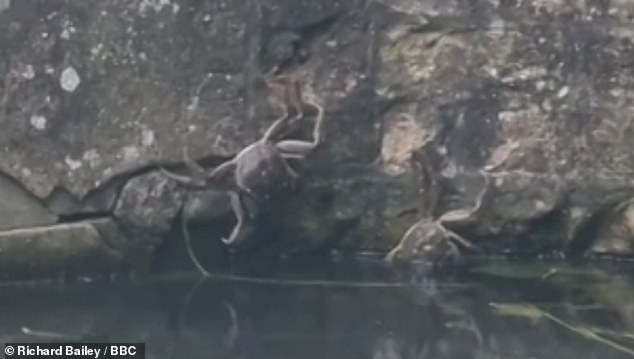
Chinese mitten crabs are among 30 non-native species listed as a concern due to their “invasiveness and ability to establish in many countries across Europe.”
“Their motivation – to spawn and complete the circle of life.” However, within this journey lies a path of unintended destruction. Waterways in places like Cambridgeshire bear witness to the damage they are causing, from damaged riverbanks to the interruption of the fishing industry.
Ms Factor said their presence in new areas was not “completely new” given sightings recorded in the 20th century.
However, she said, “their ability to traverse and exist naturally in various waterways also contributed to their spread,” including to other parts of Europe and North America.
Chinese mitten crabs—identified by their grey-green to dark brown body and dense brown “fur” on their white-tipped claws—are primarily found in freshwater rivers and streams but require brackish and brackish water environments to reproduce.
DEFRA said there is no legal hunting of this species in the UK. Therefore, if Chinese mitten crabs are caught as bycatch, they cannot be sold live for human consumption.
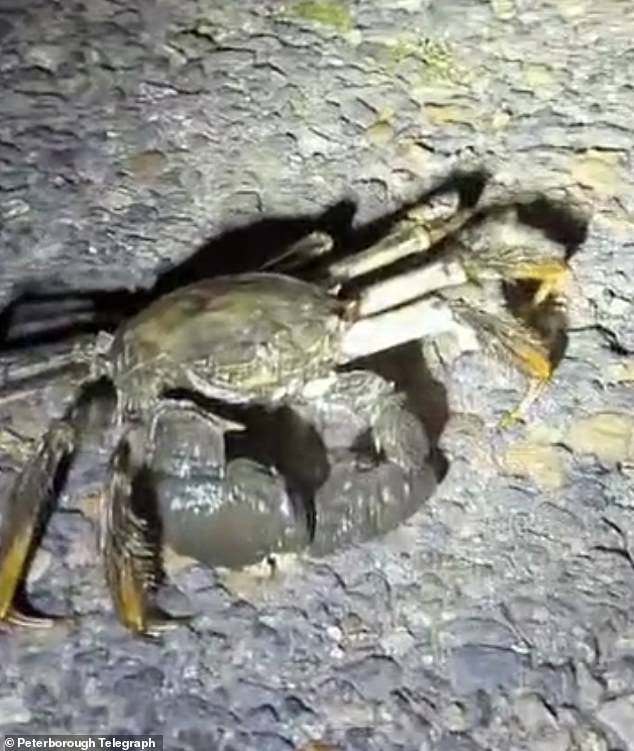
Since 2016, Chinese mitten crabs have been classified as ‘widespread’ across the UK
They said they had received reports of crabs in the Cambridgeshire Fens, and encouraged people to report sightings to stop the movement of their eggs and urged people to take photos.
At the end of last month, one of these creatures was spotted at the Royal Society for the Protection of Birds (RSPB)’s Fen Drayton Nature Reserve, near Huntingdon.
Simon Bassey was walking into the car park when he saw the creature. “It was alive and had very large pincers, I’ve never seen anything like that at Fen Drayton before,” he told The Hunts Post.
“I took pictures, but I didn’t want to touch them.”
(Tags for translation)dailymail
